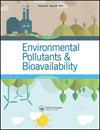Mercury contamination in five owl species from Iran
Q3 Chemical Engineering
引用次数: 9
Abstract
Abstract This study presents the concentration of mercury in feathers of 40 owls (five species) in five regions of Iran. Results showed that mercury concentration in Tawny owl’s feathers (Strix aluco) were significantly higher than in the Little owl (Athena noctua), Eagle owl (Bub bubo), Long-eared owl (Asio otous) and Short-eared owl (Asio flammeus). Also, mercury concentrations in owl feathers collected from the north of Iran were significantly higher than others regions. Furthermore, mercury concentrations in owl feathers obtained in this study were higher than other regions in the world except for Sweden. This study demonstrates that mercury concentrations in Iranian owls, with the exception of the Tawny owl, are below toxic concentration (5 mg kg-1). In addition, location was a contributing factor in the mercury concentration in Iranian owl’s feathers.伊朗五种猫头鹰的汞污染
摘要:本研究介绍了伊朗五个地区40只猫头鹰(5种)羽毛中的汞浓度。结果表明,黄褐色猫头鹰(Strix aluco)羽毛中的汞含量显著高于小猫头鹰(Athena noctua)、鹰鸮(Bub bubo)、长耳猫头鹰(Asio otous)和短耳猫头鹰(Asio flammeus)。此外,从伊朗北部收集的猫头鹰羽毛中的汞浓度明显高于其他地区。此外,本研究中获得的猫头鹰羽毛中的汞浓度高于除瑞典以外的世界其他地区。这项研究表明,除了茶色猫头鹰外,伊朗猫头鹰体内的汞浓度低于有毒浓度(5 mg kg-1)。此外,地点也是影响伊朗猫头鹰羽毛中汞浓度的一个因素。
本文章由计算机程序翻译,如有差异,请以英文原文为准。
求助全文
约1分钟内获得全文
求助全文
来源期刊
CiteScore
1.62
自引率
0.00%
发文量
0
审稿时长
1 months
期刊介绍:
Chemical Speciation & Bioavailability ( CS&B) is a scholarly, peer-reviewed forum for insights on the chemical aspects of occurrence, distribution, transport, transformation, transfer, fate, and effects of substances in the environment and biota, and their impacts on the uptake of the substances by living organisms. Substances of interests include both beneficial and toxic ones, especially nutrients, heavy metals, persistent organic pollutants, and emerging contaminants, such as engineered nanomaterials, as well as pharmaceuticals and personal-care products as pollutants. It is the aim of this Journal to develop an international community of experienced colleagues to promote the research, discussion, review, and spread of information on chemical speciation and bioavailability, which is a topic of interest to researchers in many disciplines, including environmental, chemical, biological, food, medical, toxicology, and health sciences.
Key themes in the scope of the Journal include, but are not limited to, the following “6Ms”:
Methods for speciation analysis and the evaluation of bioavailability, especially the development, validation, and application of novel methods and techniques.
Media that sustain the processes of release, distribution, transformation, and transfer of chemical speciation; of particular interest are emerging contaminants, such as engineered nanomaterials, pharmaceuticals, and personal-care products.
Mobility of substance species in environment and biota, either spatially or temporally.
Matters that influence the chemical speciation and bioavailability, mainly environmentally relevant conditions.
Mechanisms that govern the transport, transformation, transfer, and fate of chemical speciation in the environment, and the biouptake of substances.
Models for the simulation of chemical speciation and bioavailability, and for the prediction of toxicity.
Chemical Speciation & Bioavailability is a fully open access journal. This means all submitted articles will, if accepted, be available for anyone to read, anywhere, at any time. immediately on publication. There are no charges for submission to this journal.

 求助内容:
求助内容: 应助结果提醒方式:
应助结果提醒方式:


